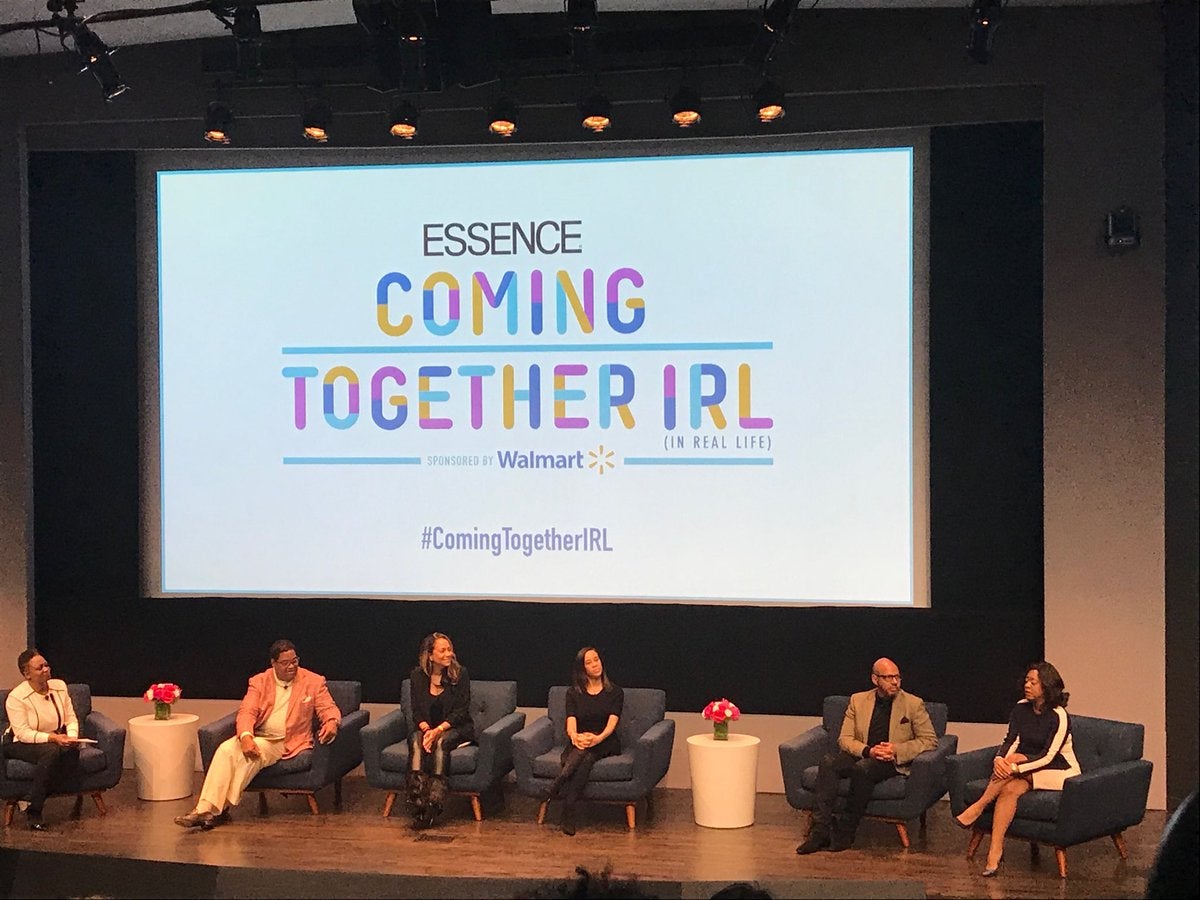
The concept of diversity in the workforce is a topic that is often discussed but has yet to be implemented effectively in a way that results in consistent representation for people of color across multiple industries.
Hosted by ESSENCE and sponsored by Wal-Mart, the 2017“Coming Together IRL (In Real Life)” panel brought a handful of the brightest minds in the business and media industries together for an honest dialogue about the unbalanced representation of people of color in today’s workforce. Topics discussed included systemic racism in the workforce, the intersectionality between the gender and race wage gap for Black women, and why corporations suffer by not diversifying their workplace.
“Over the past few years, the concept of diversity has become a hot-button topic and a marketing buzzword,” moderator and ESSENCE Editor-in-Chief Vanessa De Luca said before introducing the panel. “Yet, unbalanced representation in the work place continues to be an issue.”
For Wal-Mart Corporate Affairs Director Tony Waller, the conversation in and of itself is one he looks forward to seeing diminished and replaced with action.
“For me what would be ideal is not having to have these kind of conversations where we’re having to bring up ‘What is diversity? and ‘Why is it important?’ Despite the fact that article after article after data after data comes out showing this, the kinds of movement that should be taking place isn’t take place quite yet,” he said. “So, I’m looking forward to that day where everybody has an a-ha moment and we make it happen.”
Google Executive and WEEN co-founder Valeisha Butterfield-Jones says she makes it a point to question where women of color are in conversations about progress with regard to representation in the workplace.
“I think if you look at the progress that has happened with white women, to me, there’s a silver lining there; it shows that [inclusion] can happen,” Butterfield said. “So, what I do is always challenge the intersectionality piece. Ok, if we’re talking about women, where are Black women? Where are Latino women? Where are Asian women? How are we showing up in those conversations and in those rooms? Becase, you cannot have a conversation about women if you’re isolating certain groups and segments within that populations.”
Panelist and Center for Talent Innovation EVP Tai Wingfield also weighed in, noting that while there has been some progress in the area of workplace diversity for women in general, women of color specifically are still getting the short end of the stick.
“I think we’ve made some progress with women, but it’s mostly white women, in the workplace,” Wingfield said. “We can see Fortune 500 CEOs and we see women in that group but, we see no women of color. In terms of a grade, I think we’re doing poorly as a nation when it comes to women of color, specificallly Black women.”
Multimedia professional Emil Wilbekin later took corporations to tasks for appearing to champion diversity, while failing to actually implement the concept within their respect companies.
“I see a lot of companies, in their advertising, putting diverse people and blended families and gay couples,” he said. “But then, to everyone’s point, you go into the offices and into these boardrooms and, there’s ONE person. So, I think there’s a problem when we’re trying to say that we’re diverse, but then we don’t reflect it in our employees; we don’t reflect it in the people that are hired and promoted and trained. So, we just put this face on it and it’s not fair.”
Accenture Executive Michelle Gatson-Williams also touched on the topic of corporate responsibility, detailing the shift in the conversation within the workforce from one of obligation to one of necessity.
“When I started in diversity practice, it was about affirmative action; it was about headcount,” she said. “It was about how many Blacks, how many women, how many people you can get into a room. That conversation has since evolved into a business conversation, whereas, companies are now starting to see and understand what the ramifications are if you don’t diversify your workforce.”
You can watch the full ‘Coming Together IRL’ conversation in the video above.